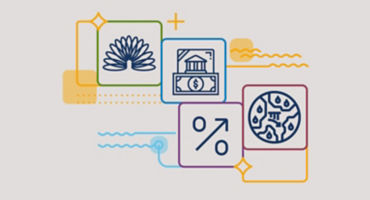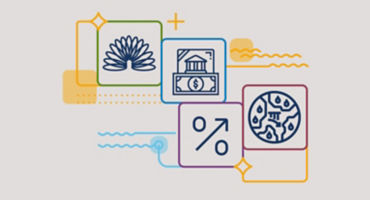- 固定收益投資組合經理
Skip to main content
- 基金中心
- 投資見解
- 關於我們
本刊所載見解反映作者於撰文時的觀點,其他團隊可能觀點各異,或會作出不同的投資決策。閣下投資的價值可能高於或低於初始投資時的水平。本刊所載第三方數據被視為可靠,惟概不保證其準確性。
The first quarter of 2022 proved to be challenging for most fixed income sectors, and convertible bonds were not immune from the volatility. Year to date through March 31, global convertibles had returned -5.81% — their third-worst quarterly showing since the 2008 global financial crisis — compared to -5.54% for global high-yield bonds and -6.90% for global investment-grade corporates.1 Sector composition particularly hurt global convertibles, including a sharp correction across technology (which makes up 23.8% of the convertibles universe) in response to concerns about the potential impact of higher interest rates on tech companies' growth prospects; and a rally in the energy sector (4.0% of the convertibles universe), fueled in part by supply disruptions from the war in Ukraine.
Looking ahead, however, we continue to believe global convertibles are likely to outperform other fixed income sectors over an investment time horizon of approximately two to three years.
Our bullish secular outlook for global convertibles is based on five key considerations
The "bear case" risk factors that we're watching most closely these days include:
However, it's always possible that a severe economic shock could cause global central banks to delay their monetary policy tightening efforts or even reverse course on their planned interest-rate hikes, which would likely help alleviate the risk of a global recession.
Today's uncertain landscape is not without potential risks for convertible bond investors to be mindful of, but as of this writing, we are cautiously optimistic on global convertibles' performance prospects going forward. We will update our views if/as market conditions warrant in the months ahead.
1Asset classes are proxied by the following indices: Global convertibles: ICE BofA Global 300 Convertible Index; Global high yield: ICE BofA Global High Yield Index; Global investment-grade corporates: ICE BofA Global Corporate Index. Sources: Bloomberg, BofA Global Research. Data as of 31 March 2022. | 2Convexity is a measure of the curvature in the relationship between fixed income asset prices and their current yields, showing how a bond's duration changes as its yield changes. For example, a bond is said to have positive convexity if its duration increases as its yield decreases. Positive convexity generally leads to greater increases in bond prices.

參考網站連結
相關投資見解
焦點圖解:四大範疇蘊藏高收益機遇
我們認為市場將在2024年持續波動,可能會產生更大的特殊差異,並帶來更有利的入市良機,投資者或可從四大高收益信貸範疇中發掘機遇。

投資債券的理據:
何以現金只是權宜之計
投資債券長遠而言比持有現金吸引?兩位專家環球投資策略師Nanette Abuhoff Jacobson及投資策略分析師Patrick Wattiau就以上議題分享見解。

美國衰退風險:
從「會否」轉為關注
「何時及如何」發生
投資組合經理Brij Khurana、Brian Garvey及Nick Petrucelli認為,不少觀察人員均低估美國今年可能出現經濟衰退的嚴重性。(僅提供英文版本)

不受限制債券基金的三大特質
投資組合經理Brian Garvey及Brij Khurana與投資總監Brian Doherty探討不受限制固定收益策略的三大特質,以至其如何為投資者固定收益組合增值。

參考網站連結
相關投資見解
重要披露
在未有威靈頓投資管理明確書面批准的情況下,概不可複製或轉載本刊全部或任何部分內容。本文件僅供參考之用,並非任何人士要約或邀請認購威靈頓投資管理(盧森堡)SICAV基金III系列的股份。本文件所載資料不應被視為投資建議,亦非買賣任何股份之推介。基金投資不一定適合所有投資者。所載見解反映作者於撰文時的觀點,可予更改而不作另行通知。投資者於作出投資決定前,務請細閱基金及子基金的產品資料概要、基金招股章程及香港說明文件,以了解詳情(包括風險因素),其他有關文件包括年度及半年度財務報告。
由威靈頓管理香港有限公司刊發。投資涉及風險。過去業績並不代表將來表現。本文件未經香港證券及期貨事務監察委員會審閱。